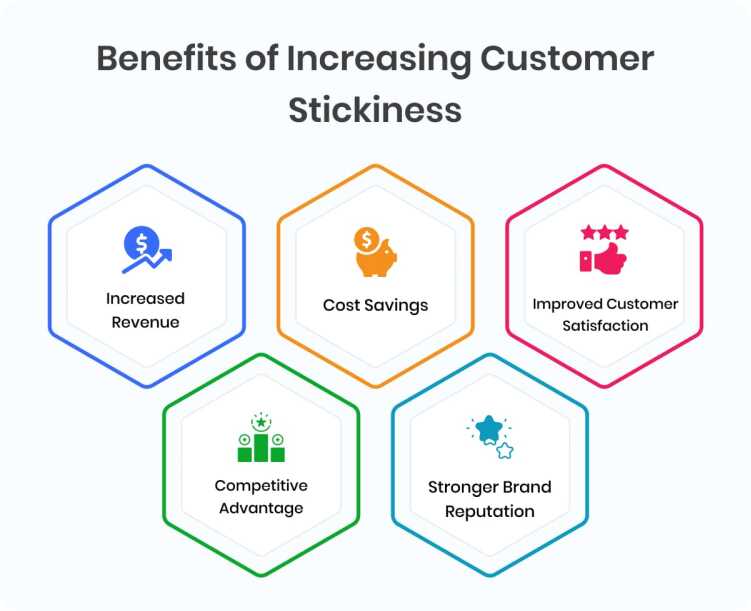REVE Chat Version 4.0
Version 4.0
Upgrade your website to an IM platform & beyond
Blending the strengths of IM and Live Chat
Upgrade your website to an instant messaging platform and beyond


Do you struggle to keep customers coming back to your business? Are you constantly searching for new customers instead of focusing on retaining existing ones? In today’s competitive marketplace, customer stickiness is more critical than ever. It refers to the ability of a business to keep customers coming back and remaining loyal to its brand.
It is the secret sauce that separates successful businesses from those that struggle to survive. In this blog post, we’ll explore what customer stickiness is, why it’s essential, and how you can increase it for your business.
Customer stickiness refers to the ability of a business to retain its customers over a long period of time. It is a measure of how loyal and committed customers are to a particular brand or company.
A business with high customer stickiness will have customers who are satisfied with its products or services, have a strong emotional attachment to the brand, and are more likely to continue doing business with them in the future.
Customer stickiness is important because it can lead to increased profitability and a sustainable competitive advantage. Companies with high customer stickiness are able to generate more revenue from existing customers, reduce customer acquisition costs, and benefit from positive word-of-mouth recommendations from loyal customers.
They also have a better chance of withstanding competitive pressures and economic downturns.
Customer stickiness and loyalty are related concepts, but they are not the same thing.
It refers to the degree to which a customer is likely to continue doing business with a company. It is often measured by metrics such as customer retention rate, repeat purchase rate, and customer lifetime value.
Loyalty, on the other hand, refers to a customer’s emotional attachment to a brand or company. It is often measured by metrics such as net promoter score, customer satisfaction, and customer advocacy.
While customer stickiness focuses on the economic and behavioral aspects of customer retention, loyalty focuses on the emotional and attitudinal aspects. Customers may continue doing business with a company out of habit or convenience, even if they do not feel particularly loyal to the brand.
Conversely, a customer may feel a strong emotional connection to a brand, but still, be willing to switch to a competitor if they perceive better value or experience elsewhere.
Both customer stickiness and loyalty are important for a company’s long-term success. High customer stickiness can lead to increased customer lifetime value, while high loyalty can lead to positive word-of-mouth recommendations and a stronger brand reputation.


The first step in increasing customer stickiness is to track and measure customer behavior. By monitoring customer activity and interactions, businesses can gain insight into what works and what doesn’t in terms of customer engagement.
This information can then be used to adjust and refine customer experience strategies, ultimately leading to increased loyalty and retention.
Providing exceptional customer service is key to building customer stickiness. Businesses should prioritize customer needs and consistently deliver a high-quality experience across all touchpoints. This means investing in staff training, streamlining processes, and adopting a customer-centric mindset.
Companies that embody a strong set of values are often more successful in building customer loyalty. This means aligning with causes and principles that resonate with customers and actively promoting these values in marketing and customer communications.
Gathering feedback from customers is crucial in understanding their needs and preferences. Well, they should regularly solicit feedback through surveys, social media, or other channels. This feedback can be used to fine-tune product and service offerings and improve customer satisfaction.
Creating opportunities for customers to engage with a brand is essential in building loyalty. This can include personalized messaging, social media engagement, and exclusive content.
By creating a sense of community and fostering ongoing dialogue, businesses can keep customers engaged and invested in the brand. It’s equally important to understand the consumer behavior model and see the strategies that can driven engagement.
Here are three tips to boost engagement:
Implementing a loyalty program can be an effective way to incentivize repeat purchases and drive customer stickiness. These programs typically reward customers for their loyalty through discounts, special offers, or other perks.
whether it’s acquisition or retention, a well-designed loyalty program can strengthen the bond between customers and the brand, leading to increased retention and revenue.
Here are some tips to create a loyalty program:
Summary
Customer stickiness is the key to building a successful and sustainable business. By focusing on providing exceptional customer service, creating a personalized experience, and continuously improving your products and services, you can create a loyal customer base that will stick around for the long haul.
Don’t underestimate the power of customer stickiness in growing your business and ensuring its longevity. Start implementing these strategies today and watch as your customer base grows and thrives. Remember, a happy customer is a loyal customer, and loyalty is the foundation of any successful business.
Start a 14-day free trial, no credit card required
Stay updated with the latest trends and ideas we share
What happens when your business doesn’t have a well-defined lead management process in place? You might then struggle to track,...
In your business, you need information about your customers’ pain points, preferences, requirements, and most importantly their feedback. Now think this...
How does the future look like to you with Artificial Intelligence shaping most of our day-to-day tasks? Sometimes it feels...


